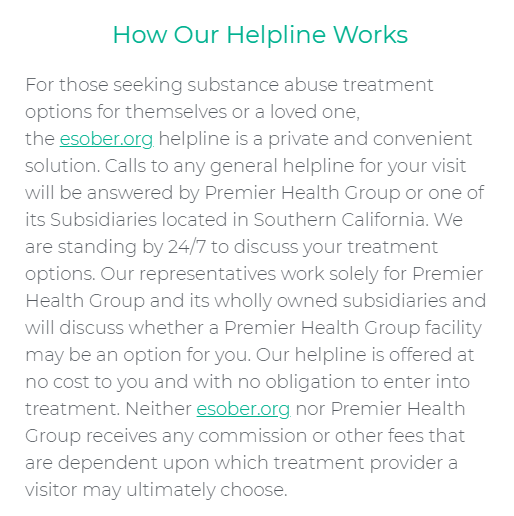Pain relievers offer comfort to those suffering from severe or throbbing pains, especially those who are fresh out of surgery or are dealing with a painful condition. These medications were devised to treat the varying degrees of pain people feel, with oxycodone as one of the most popular ones. It comes in two forms: an immediate-release form, available as a generic medication, and an extended-release form, available under OxyContin.
Oxycodone, including OxyContin, belongs to a drug classification called opioids, a Schedule II controlled substance, indicating its high potential for misuse. Many people associate heroin and fentanyl with opioids, although pain relievers like OxyContin and Vicodin belong to the same classification. For this reason, pain relievers have high abuse potential, as they produce a euphoric sensation in tandem with the soothing effects they have on pain. As a result, it can lead to addiction, overdose, and even death when misused.
Here is what you need to know about OxyContin:
What Is OxyContin?
OxyContin is a semi-synthetic opiate that relieves mild to severe pain. It is widely prescribed, usually to cancer patients and those that are physically injured. It is the controlled-release form of oxycodone and comes in capsules or pills. When taken as directed by the doctor, the patient must take it orally by swallowing the pill with a glass of water. The medication then gradually dissolves into the bloodstream over 12 hours. OxyContin is informally known as OxyCotton, OC, and drugstore heroin.
However, when OxyContin is abused, the user chews it or crushes then snorts the powder. They can also mix it into a solution, inject it into their bloodstream, or smoke it on tinfoil. These techniques annul the medications’ time-release capabilities and instead inundate the brain with its effects, almost instantly creating an intense high similar to opium or heroin. For this reason, OxyContin has been manufactured in crush-proof, tamper-resistant tablets since 2010, making it impossible to inject or snort. Still, users have found other ways to abuse the drug.
What Are OxyContin’s Side Effects?
OxyContin’s most common side effects include headaches, dizziness, drowsiness, tiredness, stomach pain, constipation, nausea, and vomiting. Those who take the drug may also experience more sweating than usual, slowed breathing, a dry mouth, itching, and constricted pupils.
OxyContin also can cause serious side effects, such as noisy breathing, sleep apnea, slow heart rate, confusion, light-headedness, unusual thoughts or behavior, loss of appetite, a feeling of weakness, and seizures. OxyContin is an incredibly addictive drug that is easily abused to the point of overdose, and ingesting OxyContin at excessive levels will increase the risk of severe side effects, including permanent brain damage. It can also result in a failing respiratory system.
How Long Does OxyContin Stay in Your System?
One dose of OxyContin stays in your system for 12 hours, although the drug and its byproducts may be detectable for longer. Naturally, the more a person takes OxyContin, the longer it will take for the system to detox itself of the drug.
OxyContin carries a high risk for dependence and addiction. When taken in high doses or combined with other substances, it increases the risk of overdose. By understanding how long the drug stays in your system, you can prevent these reactions, especially if you depend on the medication for pain relief.
The drug’s elimination half-life is around 4.5 hours, which is considerably longer than the 3.2 hours for immediate-release forms of oxycodone. Half-life is defined as the time it takes for the body to eliminate half of a substance, which means that the blood effectively stops the drug’s action in 22.5 hours. Taking OxyContin with food doesn’t affect the body’s absorption of the drug, although you may experience higher plasma levels when ingesting it with a fatty meal.
Urine tests can detect OxyContin for up to four days after the last dose. It’s important to note that standard drug screenings usually do not test for OxyContin, which means that they may use additional tests to detect its presence. Still, it can be seen by drug screening tests used in medical, employment, and forensic settings, which is something to keep in mind if you are prescribed it. Home drug testing kits can also detect its presence.

Blood tests usually aren’t used to detect OxyContin since the window is shorter, and the test is more expensive. They can test the presence of the drug for up to 24 hours. On the other hand, the drug shows up right away on saliva screening tests and can be detected within three hours of ingesting OxyContin. These tests can detect the drug’s presence in saliva for up to 48 hours after the last dose.
Like other substances, hair follicle tests detect OxyContin for up to 90 days. However, how old you are, your liver and kidney health, and your biological sex can also affect the detection. For instance, if you have mild to moderate liver impairment, you will have higher peak OxyContin blood concentrations than those who do not have liver impairment. The same applies to those over the age of 65, who had blood concentration levels 15 percent higher than younger adults, implying that older adults process the drug more slowly. Studies have also begun researching why women frequently have higher plasma levels when taking the medication than men.
What Are OxyContin’s Withdrawal Symptoms?
There are two phases of OxyContin withdrawal, and these symptoms can peak at one to two weeks after the individual halts their consumption of the drug. Early withdrawal symptoms include mood changes, like restlessness and agitation, sleep changes, like insomnia, physical changes such as muscle aches, and cold or flu-like symptoms, like chills and congestion.
However, it is also possible to experience symptoms in the latter parts of withdrawal. These include diarrhea, abdominal cramps, dilated pupils, blurry vision, shivering or goosebumps, high blood pressure, appetite loss, nausea and vomiting, and a rapid heartbeat.
OxyContin withdrawal often feels very unpleasant, but it’s important to note that it is not life-threatening. Still, many people may relapse, halting their consumption of opioids, so they need to work with a doctor to undergo medical detox.
How long the withdrawal lasts depends on various factors, which means that some may experience a short withdrawal while others encounter extensive ones. These include the strength of the OxyContin dose taken, if it was extended-release or otherwise, if the individual found ways to bypass the time-release formulas, how long they took the drug, environmental strains, and biological or genetic factors that make them inclined toward addiction.
Conclusion
OxyContin, when used properly, can offer a world of relief to those suffering from the excruciating pain that interferes with their day-to-day living. However, it has a high potential for misuse, requiring you to adhere to your prescribed dose to avoid unwanted side effects. If you believe you are at risk of addiction, be sure to get in touch with your doctor right away.
Sources:




